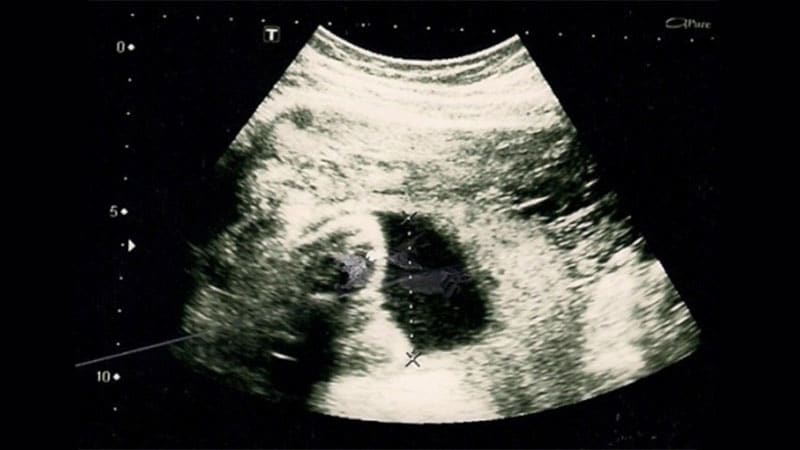Implementing universal ultrasound during the third trimester of pregnancy significantly reduced the number of undiagnosed breech presentations, according to a study published on April 6 in PLOS Medicine. The effects held if sonographers used a traditional ultrasound machine or if midwives used a handheld ultrasound tool to perform what is known as a point-of-care ultrasound (POCUS) procedure.
“Giving pregnant women a third-trimester scan reduces the rate of undetected breech in labor by over two thirds, which reduces the chances of harm to the baby,” said Asma Khalil, MBBCH, MD, a professor of obstetrics and maternal-fetal medicine at the University of London’s St. George’s Hospital, and a co-author of the new study.
Routine ultrasounds typically are performed from the 10th-13th week of pregnancy, not during the third trimester, when the risk for a breech birth would be most apparent. Breech births occur in 3%-4% of pregnancies, raising the risk that babies will experience broken bones or hemorrhage. Knowing that breech is possible before birth enables physicians to discuss options with the pregnant woman in advance, Khalil said. These steps include rotating the baby in the uterus or conducting a cesarean delivery. Such counseling is not possible if breech is undetected until spontaneous or induced labor.
“Breech presentation at term is not very common, but diagnosing it prior to the onset of labor or induction of labor offers patients much more flexibility in terms of options and planning,” said Cecilia Leggett, MD, a resident in obstetrics and gynecology at Cedars-Sinai in Los Angeles. Leggett, who was not involved in the study, has shown that handheld devices are as accurate at assessing fetal weight as standard ultrasound machines.
Two Tools, Same Result
Khalil and her colleagues compared the rates of undiagnosed breech presentations before and after implementing universal third-semester ultrasound at two hospitals in the United Kingdom. The requirement began in 2020; the study compared the rate of undiagnosed breeches from 2016-2020 vs that in 2020-2021.
St. George’s Hospital in London used a traditional ultrasound machine that is read by a sonographer, whereas the Norfolk and Norwich University Hospitals, in Norwich, employed midwives to use a handheld ultrasound device.
The rate of undiagnosed breech cases declined from 14.2% at St George’s before the universal ultrasound requirement (82 missed cases of 578 breech births) to 2.8% after the requirement began (seven missed cases of 251 breech births). The story was similar at Norfolk and Norwich, where 16.2% missed breech cases occurred before the requirement (27 of 167) and 3.5% missed cases were reported after it (five of 142).
The increased accuracy of breech diagnosis before labor probably led to fewer cases of impaired blood flow to a baby’s brain at birth, Khalil’s group reported, as well as a probable reduction in the number of stillborn babies or those who die extremely young.
Traditional ultrasound scans read by sonographers are expensive, Khalil noted, whereas the portable handheld devices are much cheaper and could be used widely to improve detection of breech births. That step would require robust training about how to properly use these devices, Leggett said.
“As we see more and more studies come out about technology for POCUS, I think it’s important to keep in mind that we need the education about the tools to be as accessible as the tools themselves,” she said.
Leggett had no relevant financial relationships. Khalil is a vice president of the Royal College of Obstetricians and Gynaecologists; is a trustee and the treasurer of the International Society of Ultrasound in Obstetrics and Gynecology; and has lectured at and consulted in several ultrasound-based projects, webinars, and educational events.
PLOS Med. Published online April 6, 2023. Full text
Marcus A. Banks, MA, is a journalist based in New York City who covers health news with a focus on new cancer research. His work appears in Medscape, Cancer Today, The Scientist, Gastroenterology & Endoscopy News, Slate, TCTMD, and Spectrum.
For more news, follow Medscape on Facebook, Twitter, Instagram, and YouTube
Source: Read Full Article
